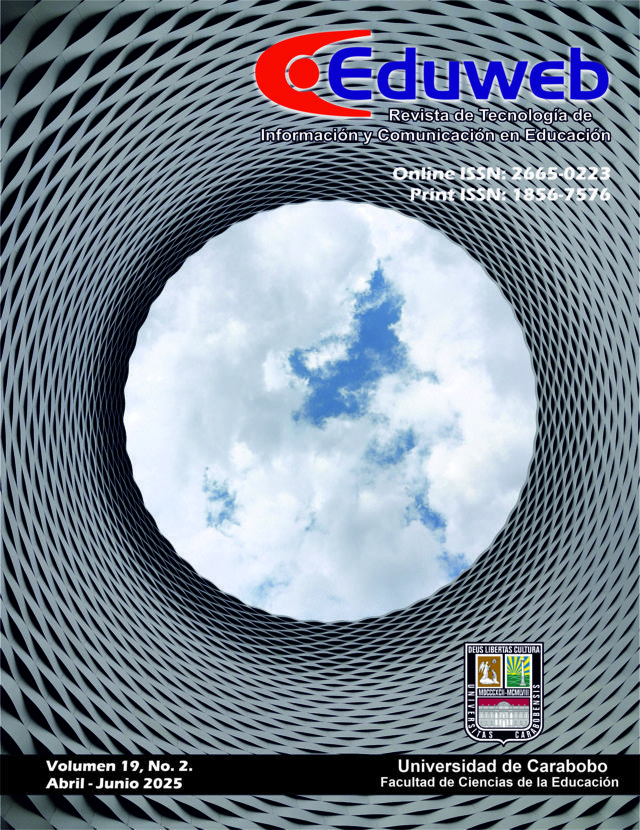Modelos educativos para el desarrollo de la experiencia en aduanas, corretaje y aplicación de la ley en la cooperación transfronteriza entre la UE y Ucrania
DOI:
https://doi.org/10.46502/issn.1856-7576/2025.19.02.11Palabras clave:
formación de especialistas, docencia, control aduanero, tránsito común, integración, legislación aduanera, armonizaciónResumen
El artículo tiene como objetivo examinar el papel fundamental de la educación y la formación profesional en el fortalecimiento del control aduanero entre Ucrania y la Unión Europea. Su propósito es evaluar cómo las iniciativas educativas apoyan la armonización de la legislación aduanera, la adopción de sistemas modernos como el Nuevo Sistema Informatizado de Tránsito (NCTS) y la modernización general de los procedimientos aduaneros. La investigación emplea un enfoque metodológico múltiple, que incluye el análisis de documentos normativos y jurídicos, estudios comparativos de modelos educativos alineados con la UE y estudios de caso sobre programas de formación para funcionarios de aduanas, agentes de aduanas y fuerzas del orden. El estudio identifica avances significativos en la alineación de los programas de formación aduanera de Ucrania con los estándares europeos. Destaca la integración de plataformas de aprendizaje digital, marcos basados en competencias y planes de estudio interdisciplinarios como componentes esenciales para mejorar las competencias profesionales del personal aduanero. El análisis demuestra que estas iniciativas han influido positivamente en la capacidad institucional, mejorado el cumplimiento normativo y facilitado operaciones comerciales más eficientes. Los hallazgos clave revelan que la educación y la formación son fundamentales para la armonización legal y una gobernanza eficaz en el proceso de integración europea. El artículo concluye con recomendaciones para avanzar en la educación aduanera mediante la colaboración internacional, el uso de tecnologías educativas y la reforma continua que respalde la alineación económica estratégica de Ucrania con la Unión Europea.
Citas
Ališauskas, V. (2023). The New Mission of Customs in the EU. What Tasks Are Facing Ukraine? EU4PFM. Retrieved from https://acortar.link/DAW99g
Berezhniuk, I. G., Nestoryshen, E.M., & Rudnichenko, E.M. (2015). European experience in implementing information systems ICS, ECS, NCTS in the context of ensuring national security of the community. Bulletin of Khmelnytsky National University. Economic Sciences, 4(1), 117-121. Retrieved from https://acortar.link/KprJl1
Chirkova, Y.L., & Bortnikova, M.G. (2022). New realities of export-import operations in the common transit regime (NCTS). Economy and Society, 43, 18-39. https://doi.org/10.32782/2524-0072/2022-43-44
Dorofeeva, L.M., & Korneva, T.V. (2023). Challenges and cooperation on the path of European integration in the field of customs. Scientific Bulletin of the Uzhgorod National University, 80, 455-461. https://doi.org/10.24144/2307-3322.2023.80.1.69
Dyachuk, V. (2024). Joint control: how Ukraine is trying to modernize the western border and why it is so difficult with the EU. Infopost. Retrieved from https://acortar.link/Y6pVlu
European Commission. (2023, September 23). Union Customs Code: Annual progress report 2023. Taxation and Customs Union. Retrieved from https://acortar.link/dnVyNg
European Economic Community. (1987). Convention on the simplification of formalities in trade in goods. Retrieved from https://zakon.rada.gov.ua/laws/card/987_012
European Parliament and of the Council. (2009). Regulation 1186/2009. Retrieved from https://eur-lex.europa.eu/legal-content/MT/TXT/?uri=CELEX:32009R1186
European Parliament and of the Council. (2013a). Regulation 952/2013. Retrieved from https://eur-lex.europa.eu/eli/reg/2013/952/oj/eng
European Parliament and of the Council. (2013b). Regulation 608/2013. Retrieved from https://eur-lex.europa.eu/eli/reg/2013/608/oj/eng
Goncharenko, Y. (2023, March 7). Ukraine seeks future role as EU’s eastern customs hub. Atlantic Council. Retrieved from https://acortar.link/14WyYN
Kharkaviy, M.O. (2013). Customs post-audit: foreign experience and domestic practice. World of Finance, 3, 118-125. Retrieved from http://sf.wunu.edu.ua/index.php/sf/article/view/751
Kril, R. (2021). Common Transit Procedure and NCTS Implementation: the Case of Ukraine. Lex Portus, 7(3), 32-59. Doi: 10.26886/2524-101X.7.3.2021.2
Kuznyak, B.Ya., & Svichkar, V.A. (2018). Peculiarities of customs regulation in the countries of the European Union. Effective economy, 4, 19-39. Retrieved from http://www.economy.nayka.com.ua/?op=1&z=6221
Law No. 4495-VI. Customs Code of Ukraine. The Verkhovna Rada of Ukraine, 2012. Retrieved from https://zakon.rada.gov.ua/laws/show/4495-17#Text
Law No. 3926-IX. On amendments to the Customs Code of Ukraine regarding the implementation of certain provisions of the Customs Code of the European Union. The Verkhovna Rada of Ukraine, 2024. Retrieved from https://zakon.rada.gov.ua/laws/card/3926-20
Order No. 86. On approval of the Procedure for completing customs formalities when applying the common transit regime using the electronic transit system and the Procedure for admitting vehicles and containers to the transportation of goods under customs seals in the common transit regime. Ministry of Finance of Ukraine, 2021. Retrieved from https://acortar.link/EEv91z
PwC Ukraine. (2023). Ukraine: Customs development report 2023. PricewaterhouseCoopers. Retrieved from https://www.pwc.com/ua/en/publications/tax-and-legal-alert/2023/ukraine-report-2023.html
State Customs Service of Ukraine. (2024). The path to the EU: Ukraine's customs sector received a high assessment from the European Commission. Retrieved from https://acortar.link/FPC54g
Tuchak, T.V., & Mohylska, M.O. (2018). FEATURES OF CUSTOMS REGIMES APPLICATION OF UKRAINE IN EU INTEGRATION CONDITIONS. Eastern europe: economy, business and management, 6(17), 52-55. Retrieved from https://www.easterneurope-ebm.in.ua/journal/17_2018/11.pdf
Vdovina, G., & Slatvinska, M. (2020). Problems and prospects of customs control in Ukraine. Scientific Bulletin of the Odessa National Economic University, 1-2, 80-92. Retrieved from http://n-visnik.oneu.edu.ua/collections/2020/274-275/pdf/80-92.pdf
Descargas
Publicado
Cómo citar
Número
Sección
Licencia
Derechos de autor 2025 Bohdan Orlovskyi, Nataliia Dobrianska, Eduard Ivanchenko, Serhii Fedchyshyn, Ruslan Komisarchuk

Esta obra está bajo una licencia internacional Creative Commons Atribución 4.0.















